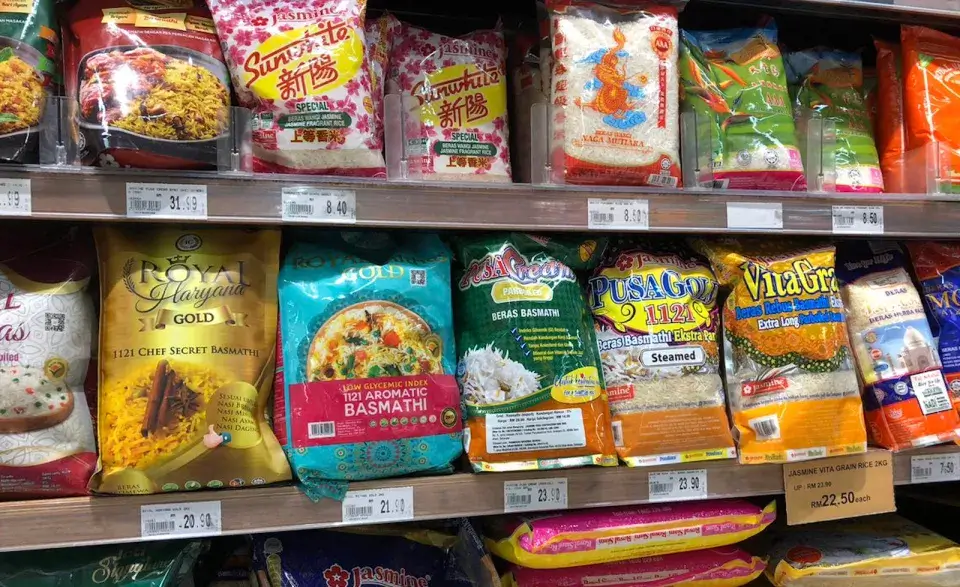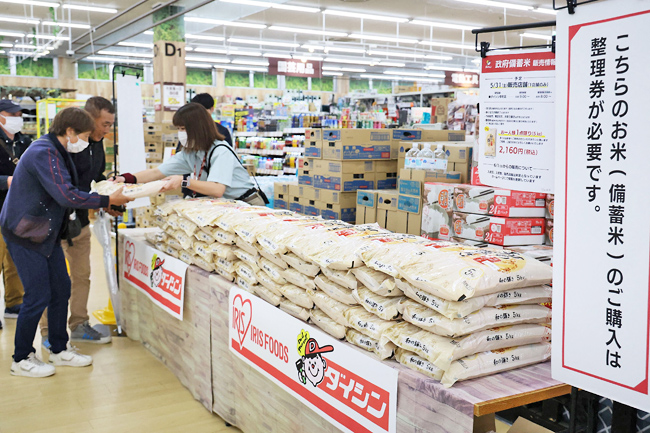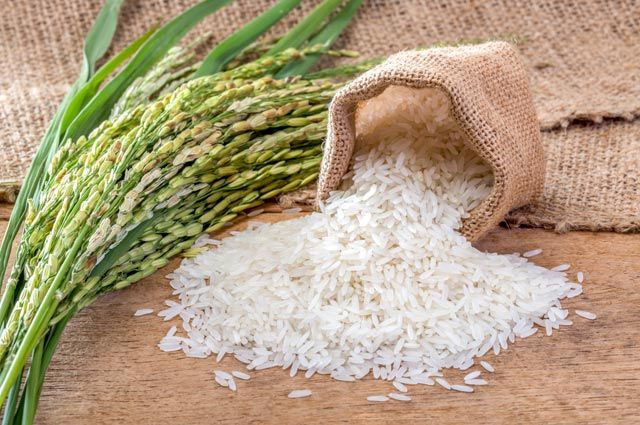Tags
India’s rice export ban: Can Malaysia consider holistic food security solutions and white rice alternatives?
Stocks of locally-produced rice fly off the shelves almost as soon as they arrive at grocers and hypermarkets, no thanks to panic-buying.

Supply shortages and exorbitant prices of rice have recently caused distress to Malaysians. (Photo: D. Kanyakumari for Yahoo Malaysia)
By D. KANYAKUMARI
Rice is a staple that Malaysians can’t get enough of. Yet, supply shortages and exorbitant prices have recently caused much distress.
For context, Malaysia is a rice producer, recording local production figures of 1.68 million tonnes in 2021 and 1.57 million tonnes in 2022. Also, the country has been importing about 30 per cent of its rice consumption annually for the last three decades.
The recent distress began in July, when an announcement by the Indian government to ban the global export of non-basmati white rice to cater to its own domestic demands was greeted by no small measure of anxiety here.
To be clear, alongside India, Malaysia also imports rice from Pakistan, Thailand and Vietnam. However, global prices of imported rice have shot up across the board since New Delhi’s announcement. And that has caused locally-produced white rice to fly off the shelves.
In fact, it seems that stocks of locally-produced rice are depleted almost as soon as they arrive at grocers and hypermarkets, no thanks to panic-buying.
“We do try to order more. But our suppliers can only give us what they can get,” says a worker at a large hypermarket chain. “Plus, production has been affected by the unpredictable weather.”
So what exactly can be done given the situation?
Quick response
The Malaysian government has not sat idly by. It has announced several mitigating measures to ensure continued rice supply soon after India’s announcement.
Among others, it introduced initiatives to help white rice suppliers contracted by the government to obtain imported rice at wholesale prices.
It has also directed the Federal Agricultural Marketing Authority (FAMA) to increase the distribution of rice to rural areas, launched a cross-ministerial task force to investigate issues related to the smuggling of subsidised imported white rice to neighbouring countries, and announced agricultural subsidies and incentives amounting to RM2.6 billion.
Even so, and despite India later allowing the export of 170,000 tonnes of non-basmati white rice to Malaysia as a friendly gesture, there is a belief that Malaysia has been in a vulnerable position food security-wise for many years. The current issue was in fact a long time coming.
This is why it is felt that the powers-that-be should be looking at developing Malaysia’s agricultural capacity to meet the country’s own needs. And, according to experts, the efforts need not be very complicated.
Holistic solutions
For instance, Muneeb Yousuf of U-Hijau, a company that promotes sustainable farming, feels that while Malaysia has long emphasised the large-scale farming of rice, it should narrow its focus.
“A major reason (for the current predicament) is that smallholder farms and urban farming remain untapped in regard to their potential to contribute towards boosting the capacity of Malaysia to weather systemic shocks,” he says.
To improve the situation, Muneeb believes that the government should look at comprehensive solutions that seek to maximise existing spaces.
“We need to make edible landscapes rather than just beautiful ones. We also have to increase biodiversity and (possibly) change the types of food we consume and go back to our local heritage,” he adds.
It is important to note that the dietary habits of Malaysians have changed over the years, with the consumption of rice per capita actually declining significantly since the 1970s; from approximately 120kg to 77kg last year.
Hence, Muneeb’s point about the need to possibly develop other foods, beyond just rice, is valid.
What is beyond white rice?
That said, there are also other rice variants that could be looked into and developed, such as heirloom rice.
This is a special kind of indigenous rice that has over 300 varieties and is currently being cultivated in Sabah and Sarawak. It has been turning the heads of chefs, health enthusiasts and farmers due to its chewy texture and nutritional value.
But despite heirloom rice’s rising popularity, nutritiousness and ability to contribute to Malaysia’s food security, Anni Mitin, vice-president of the Malaysian Agroecology Society for Sustainable Resource Intensification (SRI-Mas), warns that proper plans need to be mapped out beforehand if Malaysia is really serious about cultivating the rice.
The reason? To ensure that prices are kept low.
“With cash crops, they are usually floated on the futures market. So at some point, the price will increase. And we don’t want that,” Anni says.
She further notes that local rice farmers might not be able to compete with big players if heirloom rice reaches the futures market.
For the time being, thus, a better alternative might be to focus on improving the local supply of white rice to ensure self-sufficiency.
For the record, the government is targeting to hit 75 per cent rice self-sufficiency by 2025 under the 11th Malaysia Plan and 80 per cent self-sufficiency under the National Agrofood Policy 2021-2030. The ultimate goal should be full self-reliance.
When that will be achieved, however, is the big question.
https://malaysia.news.yahoo.com/indias-rice-export-ban-can-malaysia-consider-holistic-food-security-solutions-white-rice-alternatives-233013997.htmlPublished Date: November 23, 2023






